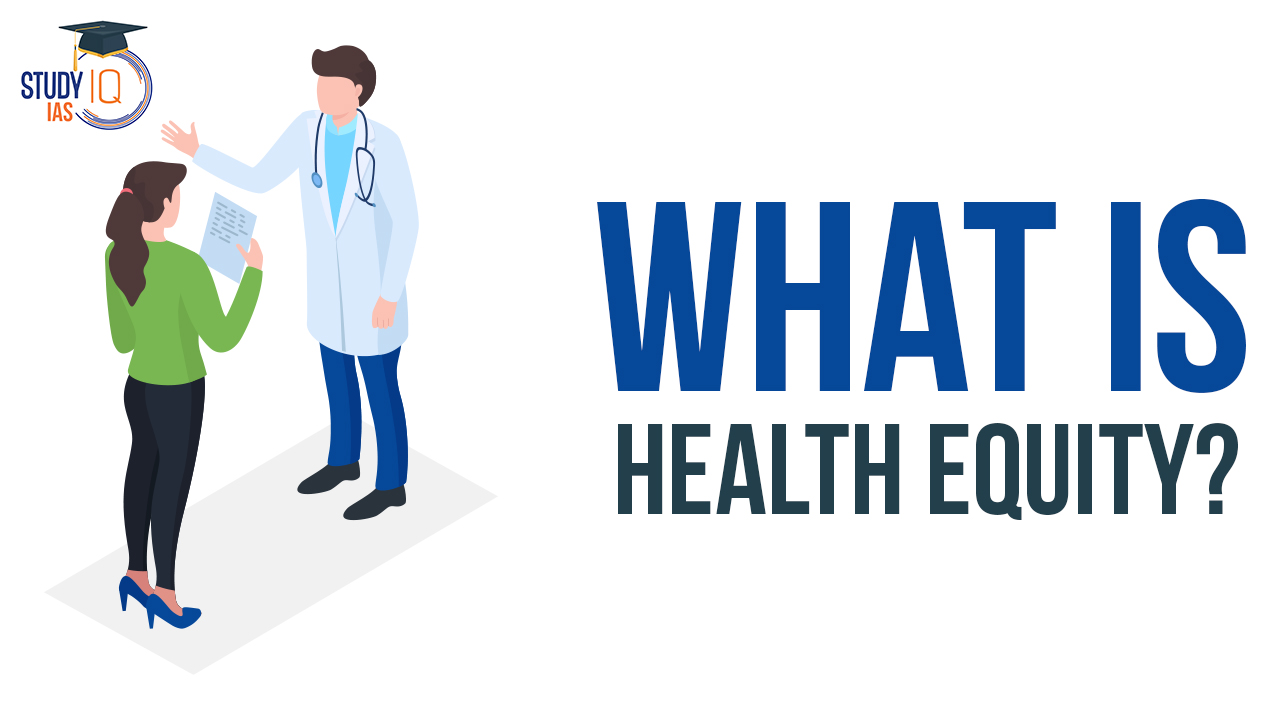Table of Contents
What is Health Equity?
- Definition: Everyone has an equal opportunity to achieve optimal health, regardless of background. Goes beyond access to healthcare, addressing social determinants of health like poverty, education, and environment
- Example: A child in rural poverty lacks access to clean water, food, and immunizations, increasing risk of chronic health problems.
Challenges to Health Equity
Global Challenges
- Deeply rooted social injustices and global health issues create roadblocks.
- Diverse populations in multicultural countries like India need equitable healthcare access.
- Specific challenges include:
- Pandemics disproportionately affect marginalised groups, widening the health equity gap (e.g., COVID-19).
- Climate change disproportionately impacts low-income and vulnerable populations.
- Conflicts destroy infrastructure, displace communities, and limit access to vital medical services.
India Specific Challenges
- A large and diverse population faces significant disparities in healthcare access and outcomes.
- Rural India lags behind urban areas in healthcare access despite improvements in the past 20 years.
- According to the 2011 Census, urban slums make up over 17% of India’s metropolitan areas, and exhibit serious health disparities.
- Urban slums with overcrowding, poor sanitation, and limited clean water access exacerbate health risks.
- Example: Infectious diseases like tuberculosis are 1.5 times more common in slums (source: Indian Council of Medical Research).
- Deep caste and gender disparities exist:
- Scheduled Castes/Tribes have higher child mortality and lower immunisation rates (source: NFHS-5).
- Anaemia is almost double as common among women in the lowest wealth quintile (source: NFHS-5).
- Non-communicable diseases (NCDs) cause over 60% of deaths in India.
- The economic impact of NCDs is projected to exceed $6 trillion by 2030 (source: Public Health Foundation of India).
- Doctor shortage is critical, with only 8 doctors per 1,000 people (below WHO’s recommended ratio).
- The shortage is worse in rural areas, with over 75% of healthcare professionals concentrated in cities (27% of the population).
| Fact |
|
The Road to Health Equity
- Requires a multi-sectoral approach beyond just healthcare access
- Collaboration is needed between governments, civil society, healthcare providers, and communities
- Examples of initiatives in India:
- Ayushman Bharat: Free health coverage for the bottom 40% economically
- National Health Mission (NHM): Expanding access, strengthening infrastructure, providing services to vulnerable populations
- Focus on health literacy through education
- Collaboration between public/private sectors and NGOs to improve access, workforce development, and infrastructure
The Role of Different Stakeholders
- Public and private health sectors can collaborate to:
- Provide services to underserved communities
- Focus on preventive education
- Develop workforce
- Improve infrastructure
- NGOs and civil society can:
- Conduct direct community outreach
- Address local health concerns
- Partner with international/government organisations for culturally sensitive health initiatives.
- International organisations (WHO, Global Fund, Gavi) can:
- Support health initiatives in resource-limited settings
- Promote information and resource sharing to improve healthcare systems.
- Private sector and philanthropies can leverage innovation and technological advancements (digital health) to:
- Enhance accessibility and affordability
- Increase reach and effectiveness of healthcare delivery.
- Research institutions and academia can offer crucial insights into:
- Health inequalities
- Intervention effectiveness
- Evidence-based practices and policies
- The Importance of Local Organisations:
- Organisations with a strong local presence are crucial for health equity.
- They understand community needs and can ensure program relevance and effectiveness.
- Successful collaborations require:
- Open communication
- Mutual respect
- Shared goals
- Emphasis on community empowerment, knowledge sharing, and capacity building
- Adaptability to evolving health concerns and community demands.


 Utkal Divas 2025: Odisha Foundation Day ...
Utkal Divas 2025: Odisha Foundation Day ...
 NASA Parker Solar Probe Flies Closer to ...
NASA Parker Solar Probe Flies Closer to ...
 List of Military Exercises of India 2024...
List of Military Exercises of India 2024...





















